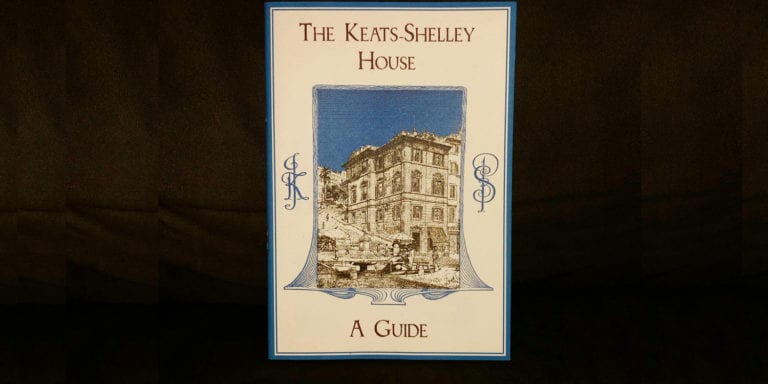
Oh, the streets of Rome are filled with rubble,
Bob Dylan
ancient footprints are everywhere.
You could almost think that you’re seeing double,
On the cold, dark night on the Spanish Stairs….
.
Oh, the hours we spent, inside the Coliseum.
Dodging lions, and a-wasting time,
oh those mighty kings of the jungle, I could hardly stand to see ’em
Yes it sure has been a long, hard drive.
Train wheels a-running thru the back of my memory,
When I ran on a hilltop following a pack of wild geese,
Someday everything is gonna sound like a rhapsody
When I paint my masterpiece.
I rambled miles and miles all over Rome in the last week.
I visited museums and sites which spanned the history there from Etruscan and pre-Etruscan to the Mafia bombings in the early 90s and recent papal changes and the European Union revolution.
I took Latin for four years in Junior high and high school:
Gallia est omnis divisa in partes tres.
“All of Gaul is divided into three parts.”
Since I was little more than a child, Caesar’s words have been engraved in my mind like the thousands of Roman words etched in stone around this city.
The city is unknowable.
In some ways like an onion—you peel one layer after another. But is essentially the same—each layer through the centuries, through the layers, is “Rome.”
It is the same living entity. You’ve just gotten into it a little deeper.
“Veni, vedi, vici.”
Another Caesarian quote chiseled into this head decades ago.
“I came, I saw, I conquered.”
Hundreds could claim they came, they saw, they conquered Rome.
Vanity.
Where are they now?
Rome abides. It absorbs every “conquest” and makes that a piece of its history.
But it doesn’t matter. Aeneas, Caesar, Visigoths, Emperors, Popes (good and bad), Garibaldi, Vittorio Emmanuel, Mussolini, postwar Communists and Nationalist statists…all gone.
And now, the EU claims the city. It is perhaps the most doomed conqueror of all. It wants to make Rome, and Italy, the same as Poland and Ireland. Brussels feels it knows what is the best for the grape growers and cheese makers and olive crushers in this boot of land sticking out into the Mediterranean Sea. Like a distant Emperor’s bureaucracy, it delivers remote edicts to locals who have plied their trades in situ for thousands of years.
I’m sure the artisans and farmer and winemakers laugh and find some workaround.
As they have for thousands of years.
The EU flag, a circle of yellows stars on a field of blue, flies all over the city. It will be a museum piece before too long.
Another ruler whose yoke is borne until the next “European” takes charge.
Rome is the Eternal City. It has not changed. It is eternal confusion. Its confusion the same today as 2000 years ago.
But the trams run well. The food is amazing. The wine and drinks are great. The fashions are eternally absurd. The Romans careen around the streets in their tiny cars, on their Vespas and motorcycles, pedaling up and down the hills on their bicycles. They chatter to one another constantly, but now more often they chatter aloud to the little plastic slab in their hand.
I arrived in the city early Saturday, December 7. I had a fat DK Eyewitness Travel Guide in my carry-on. I’d glanced at it a bit over the prior few weeks but was too busy, and perhaps too disengaged, to study it and make any plans.
I didn’t think about the major sites. They would take care of themselves.
My only “mission” was a pilgrimage to the Protestant Graveyard—wherever that was.
I’d looked at the layout of the major regions I would need to know about and gave up.
There are 16. SIXTEEN.
I like my DK Eyewitness Guides. Chicago and Dublin have 3 regions printed on the front endpapers. Boston has 5. Paris has 13—but most of those are easily defined geographically.
Sixteen was too confusing. Too much. I would learn it on my feet.
The hotel I’d chosen, a Hilton Garden Inn was not on those generic city region maps. Its area was in a section of the DK Guide called “Farther Afield.” I found its street on one of the 12 full-page detailed street maps in the DK Guide. It was just above the big green park called the Villa Borghese. The walk didn’t look too bad. I would just cross into the park and walk south through it until I hit “City center.”
Plus things were extremely busy in the Wonder Book world. Since returning from the Boston ABAA show, the wheels of commerce began spinning even faster here. The period from just before Thanksgiving to Christmas and through New Year’s is always extremely busy. A lot of people want a lot of books for themselves and as holiday gifts for others.
Our new website, www.WonderBook.com, was still shaking off some of its glitches. But all in all it is a wonderful incarnation. Fast and easily searchable it is the result of months of effort by many people inside and outside of Wonder. Maybe, just maybe, we can start selling books on our own site in a big way. That would be a wondrous thing. The stuff dreams are made of. Our very many, VERY quirky items—so many “unique” online*—would be showcased rather than lost in the oceans of material on the mega sites where we list our books as do thousands of others.
* That is we have the only copy according to World Cat.
The hotel had emailed and inquired whether I wanted a private car to pick me up. The price was just a few Euros more than taxis. It would save me the learning curve of finding the taxi stand and the confusion of explaining the hotel’s address. I had a very strong feeling that English would be scarce at that level.
I have no Italian. I can get by in French. I can get what I need in Spanish.
I stumbled through customs and baggage pickup. I was groggy, although I’d slept pretty well on the overnight flight. Sure enough there was a man holding a sign with my name written upon it!
I was whisked through a morning’s blur of highways and then into a warren of twists and turns of narrow and busy city streets. The car—a Toyota minivan—came to a sudden stop, and we were at the hotel. The driver lifted my big bag from his trunk. I slung my leather shoulder bag over my shoulder. I peeled off some bright blue Euro bills and held them out.
“Grazzi! Grazzi!”
Cash, I was told in the email, was preferred.
Even though it was early morning, I was given a room.
“…an upgrade for you. With a balcony!”
I got into the tiny stainless steel lift and rose to the 6th floor.
The room was fine. Bright. Modern.
I washed up, considered the bidet and descended to floor “0.”
For my personal biological clock, the only way to get oriented is to push through the first day to reset my “day” to match the diurnal cycle where I’ve gone.
I oriented myself on the map and crossed the street, and in a minute I was in the vast Villa Borghese Park—a big green island on the maps of Rome.
It is Thursday. My trip is over—but for the flight home. I’m seated in 10A. The American Airlines flight was delayed over an hour by a work slow down by plane cleaners. I sat in the E Gates lounge trying to peck away at this and checking my iPhone to see if there were any messages.
I’d sort of cut things off. Would I regret the decision? I know that it is for the best. Still… I checked. It is hard to give up something even when it is so dysfunctional.
Neu ja…
Suddenly, I found the vinyl benches all around me were filling quickly with Asians. Only Asians. A flight at a nearby gate was called, and they all rose to board their Sichuan Airlines flight.
The gate closed after several “final announcements.” The attendants pulled a strap across the entry.
Suddenly four people ran up.
“Passports!”
The main guy in a camelhair coat and a scarf which hung below his knees fumbles through everything he had. Two women and another man produced their documents and were ushered toward the escalator. One attendant was busy on a phone letting the plane know there were four more bodies to load before the door could be closed and armed.
Finally, the scarf man’s passport dropped to the floor from some pocket or carry-on thing. He was let through and headed for his flight to China.
Then the seats around me filled with mostly shorter people with black hair and dark skin. Their flight aboard Uzbekistan Air was announced. These people flowed away from me and down an escalator to their plane bound for central Asia.
On board my plane looking out my window, the plane next to us is Ukraine Airways. Just beyond that is a South China Air jet.
We’re finally backing away from our gate and I’m advised I need to put away this “large electronic device.”
The seat next to me is empty which is a joy.
This trip has been uncrowded all the way through. The flight over was half empty. Maybe the first third of December is a good time to visit Rome. All the lines were short—if there were lines at all—everywhere—from the Coliseum to the Vatican Museums to the numerous galleries I visited.
It was clear from the empty “people sorters”—those barriers which line you in rows which go back and forth, back and forth—between metal “fences” or ropes or other dividers—that sometimes there are hundreds or thousands queued to get into sites I simply breezed into.
We’re 25,000 feet over the Mediterranean and rising. I dosed during the takeoff and ascent. I was reading the booklet I’d purchased at the Keats-Shelley House at the end of my first day.
I awoke to the hacking cough I’ve had for about 10 days. It was so bad two nights before I left that I considered canceling. I’d injured my ribs or diaphragm with the explosive coughs. It felt like a dagger in my chest. I would have to brace myself, pressing my hand against a wall, to keep from doubling over when an attack came.
It got me to thinking of “consumption” and infection and how young I would have died if I’d lived in the era before antibiotics. I faxed my doctor pleading for cough medicine and antibiotics.
Just now I got into my carry-on and took a sip of medicine I’d decanted into a little plastic mouthwash bottle. The big bottle of cough medicine wouldn’t have gotten through screening. I was smuggling my meds.
That should settle my lungs for a while—usually a few hours. It had this entire trip.
We are flying over the northeast tip of Sardinia. I wonder if I’ll ever get there. I’ve wanted to. I put off so many trips waiting on…someone. Now, I don’t know if I want to travel places that would require driving like Sicily and Sardinia. Maybe I’ll become one of those bus tourists.
It’s not that I’ve resisted that mode of travel. I wouldn’t even consider it. I’d feel like just another sheep in a flock.
It is 6:30 am in “Filadelphia” the video screen on the set in front of me says. People are waking in America.
I wonder if anyone is thinking of me? I am thinking of someone…in America.
Doesn’t matter.
It is what it is. I tried. I tried too hard and too long. Foolish. It’s been obvious for months.
Rome…
The northernmost entrance to the park is where the zoo is. The old signs read Giardino Zoologico. The new green signs read Bio Parc. The familiar smell of animal dung and straw—like no other except in zoos—reminded me of my trips to see the exotic animals when I was a little child in leather sandals with white socks. Shorts held up by a bib and shoulder straps. Was that a jumper? A white cotton button-up shirt beneath. Zoos made me an animal lover from toddlerhood. Circuses too.
If all the animals are put out of sight—in their remote natural habitats—will future children be able to connect to their actual physical existence?
The only animals I saw walking along the leaf littered roadways were a group of very tall black and tan hairy camels. They were behind iron bars beyond the tall bars fences on either side of this road. It was cold and gray. Low 50’s. The leaves I trod upon were mostly sycamore. All were brown and dry except those near puddles or mud which were composting to muddy soil. I came to a crossroad in the forested parkland. I looked at the maps in my book and the Modern Art Gallery was nearby on a path to the right.
The young man at the desk informed me “Moderna” in this instance meant mostly 19th century and early 20th century works. I wandered from room to room. High ceilings. It was someone’s old mansion or villa. There was a stunning Klimt. Gustav Klimt swept me off my feet when I was a certain age. There was an odd green and yellow portrait painting as well. An unusual Van Gogh. It was a satisfying low-key beginning.
From there it was only a short walk to the Villa Giulia. It was another grand old place. This one was designed for Pope Julius III. A beautiful building in its own right designed by a number of architects—including Vasari and Michelangelo. It is now the Etruscan Museum. I’ve never really understood who they were. I think their roots are still somewhat of a mystery. They ruled central Italy hundreds of years BC. Going through the collections I got a Grecian vibe but also a Phoenician flavor. If Rome was founded by Romulus and Remus—twin grandsons of the Trojan hero, survivor and emigrant, Aeneas—well it all sort of comes together and makes sense. There was a prediction that Rome would be founded on the spot where the fleeing Trojans “ate their tables.”*
* Meanwhile, Aeneas and his captains are eating on the beach, with fruit spread out on flat, hard loaves of bread. They finish the fruit but are still hungry, so they eat the bread that they have used as “tables.” Ascanius notes with a laugh that they have indeed eaten their tables, thus fulfilling the Harpies’ curse in a manner less dire than anticipated. Aeneas recognizes that they have arrived at their promised land. The next day, he sends emissaries to King Latinus, requesting a share of the land for the foundation of a new city. Latinus offers territory as well as something extra—mindful of the oracle’s words, he suggests that Aeneas take the hand of Lavinia in matrimony. Latinus recognizes that accepting fate, even if it means that the Trojans will one day rule his kingdom, proves a safer course than resisting destiny.
In college, studying under William Meredith, I wrote a poem about Palinurus.* Palinurus was Aeneas trusted pilot. Meredith liked the poem very much.
“You’ve done it. Now the test is to see if you can do it again,” Meredith told me.
It began:
Palinurus fell from Ilion’s helm
When Hypnos charged Tyrrhenian sprays with Lethe’s potions
In his sudden sleep he dropped both tiller and rudder as he fell…
* Palinurus’ story: In Book 3, which tells of the Trojans’ wanderings after The Fall of Troy, he is singled out as an experienced navigator. In Book 5, when the Trojans have left Carthage, he advises Aeneas to forestall sailing to Italy and to wait out a terrible storm on Sicily, where they hold the funeral games honoring Aeneas’s father, Anchises. After they leave Sicily for Italy, Palinurus, at the helm of Aeneas’s ship and leading the fleet, is singled out by Virgil in second person when it becomes clear that he is the one whom the gods will sacrifice to guarantee safe passage to Italy for the Trojans: unum pro multis dabitur caput, “one single life shall be offered to save many.” Drugged by the god of sleep, he falls overboard; Aeneas takes over the helm and, unaware of the gods’ influence, accuses Palinurus of complacency: “You, Palinurus, placed too much trust in the sky and the ocean’s / Calm. You’ll lie naked and dead on the sands of an unknown seashore.” Aeneas next encounters Palinurus in the underworld, before he crosses Cocytus (which the ghosts of the unburied dead cannot cross into the underworld proper), where he asks how it came to be that he died despite a prophecy from Apollo, that he would reach Italy unscathed. Palinurus responds that he survived the plunge into the sea and washed ashore after four days near Velia, and was killed there and left unburied. The Cumaean Sibyl, who has guided Aeneas into the underworld, predicts that locals will come and build him a mound; the place will be named Cape Palinuro in his honor.
…I can’t find the rest of the poem anywhere on my laptop.
I wonder where that it is? I’m sure there’s a copy in the papers, the Juvenilia, somewhere. But I haven’t seen it for many, many years. It was pretty inspired for a 19 year old. I wonder where it came from? I wonder that I never “did it again.”
About that time fate threw a number of curve balls at me. I was pushed from a poet pedestal into things far more mundane.
If I kept at it, maybe I would have died young and become famous. LOL.
Anyway, the founding of Rome has a bit of a personal connection to me in that it was “critically” the best thing I ever wrote.
The Via Giullia was to be an important name for the rest of the trip. The #3 tram’s route ends at Via Giulia. If I caught a train whose final destination was the Via Giulia, I knew I’d end up close to my hotel—in the right section of the vast and confusing city.
The sectional maps of Rome at the back of the guide extend for twelve full pages. Those maps were the ones I referred to find exactly where I was. Map #1 indicated the Giulia was just a short distance from the Tiber. If you can ever latch yourself onto a city’s major body of water, you know you cannot go too far awry. Chicago has Lake Michigan. New York the Hudson and East Rivers. London the Thames. Paris the Seine. Dublin the Liffey…
Get to the water and you can find yourself on the map.
Walking across an iconic river is a big deal to me. I’ve crossed the Nile and the Danube, Rhine and Rhone, Niagara and Mississippi…
I crossed the Tiber on the Punte del Risorgimento. The roads on either side of the river are named “Lungotevere” …something. (Tevere=Tiber.) The word after Lungotevere changes seemingly randomly. This bridge, it turns out was to be the highest upriver I crossed. The furthest downriver was 16 spans later. SIXTEEN BRIDGES. I didn’t pass all those bridges Saturday. After all, all the bridges in Rome were not to be crossed in one day.
I walked and walked and walked. I knew from the map and common sense that following the river I would come to the Vatican City eventually. I just didn’t know how long it would take. I began walking along the Tiber toward the center city. It was then I got the feel for the vastness of Rome. I walked and walked…the little map appeared bigger and bigger.
Eventually I saw the Dome of St Peter’s in the distance. I kept to the various Lungotevere on that side of the river. I didn’t dare risk trying any shortcuts to the Vatican. I came to some stalls set up on the ramparts overlooking the river. At one time they must have been book and print stalls. Now they were loaded with mostly tourist junk. Across from them there was a little cafe. Its exterior was lined with books. A section of it had a sign Biblio Bar.
A book bar…sigh…Roberts’ Folly…
The route then took me past the Castle Sant’Angelo (which was repurposed into a fortress from its original function as the enormous Emperor Hadrian’s Tomb.)
Then a spur of road inland, a short walk up a wide boulevard into St Peter’s Square. It was mid afternoon on a bright cool Saturday. Thousands were there in lines or milling about, but I’d seen images of it being much fuller. Guide ropes and mobile barriers throughout the Square make it clear it can control MANY, MANY more people than were there today. I wandered around the cobbled acres. It was Christmas in Rome.
“Buon Natale.”
There’s a tall Christmas tree and a nearly life-size crèche scene. Baby Jesus was missing from the manger. His effigy will not arrive until December 25th when he is “born.”
I recrossed the river. It was about 4 pm. My feet and legs were getting tired and sore. I hadn’t seen any taxis. Plus I wanted to try to figure this place out.
I failed. Soon I was lost in a confusion of medieval streets, alleys and tiny piazzas. The roads were not much more than ten feet wide. Groups of people were flowing randomly through it. There was no right or left. Just angles this way and that. There were hundreds of boutiques and cafes and taverna lining the way. The old and ancient buildings on either side rose 3 to 5 tall stories or higher. It was like trying to find your way in darkening canyons. I struggled to not go back toward the river. Often I wasn’t sure. Then I stumbled into a rather large and festive square. I was able to find it on the map. Canova Piazza. There were a number of large Christmas stalls lining its rectangular center.
At one end, a garish Punch and Judy show was holding a crowd’s attention. The puppets whacked one another on the head and squawked constantly. I was tempted to eat something authentic but didn’t want to stop until I knew I could find the Borghese Park and then the hotel.
I wandered through more canyons, and it got darker above while all alongside the little shops and cafes were brightening. Then the streets began to become a little broader and centuries more modern. I found myself in a crowd on a brilliant avenue. On either side were stores like Prada and Gucci and Bulgari. Overhead hundreds of thousands of bright lights twinkled festively. Up ahead I saw the Spanish Steps rise steep and high into the dusk above. I was near the southernmost tip of the Borghese. It was becoming Saturday evening. The steps were packed with hundreds of mostly young people. Under a streetlamp, I saw on the map I could walk around the steps and avoid the long steep climb as well as the mob.
Then to the right of the steps I saw a red and gold banner hung from the building immediately adjacent:
“Keats-Shelley Museum”
Would it be open?
Would it be impossibly crowded, full like all around me with the milling shoppers and gawkers?
I pulled the door open and stepped into a different world. Quiet. Somber. Classic. Up some steps.
I asked a young woman:
“Are you open? Will I have time to go through?”
I had well over an hour.
How exhausted I was. How my feet hurt.
In a couple months (February 2020), it will be exactly 200 years when John Keats’ life changed forever at his home in London.
A night in early February 1820 when he returned home after catching a bad chill, he staggered upstairs in a fit of coughing. He had a major hemorrhage from his lungs. He called to his housemate Charles Brown to bring him a candle, and used it to illuminate a stain on the sheets: blood he had coughed up. “I know the colour of that blood,” Keats said to him. “It is arterial blood. I cannot be deceived in that colour—that drop of blood is my death warrant—I must die.”
Keats had studied medicine before abandoning science to pursue his muse—Poetry.
His condition deteriorated rapidly. It was decided he should move to Rome in hopes the climate would help the symptoms of the wasting disease.
[Odd, my week there was gray, damp and in the low 50s-60s.]
He left his sister, Fanny. He left another Fanny in England—his true love—Fanny Brawne. He had become engaged to her in 1819. They’d exchanged locks of hair.
He left for Rome in November 1820.
His health got worse.
Soon he was bed bound and could only enjoy the sounds of the commerce going on outside on the Spanish Steps. He became so ill he yearned for death. His friends took his laudanum away from him.
He would often awaken disappointed to find he was still alive.
His friend Joseph Severn lived with and cared for him in Rome. He was at his side constantly. He wrote another Keats friend in London, Charles Brown:
—on the 23rd—Friday—at 1/2 past 4 the approaches of death came on—”Severn—S—lift me up for I am dying—I shall die easy—don’t be frightened—thank God it has come”—I lifted him up in my arms, and the phlegm seemed boiling in his throat—this increased until 11 at night, when he gradually sunk into death—so quiet that I still thought he slept.
The Italian authorities knowing of his disease insisted everything to the very wallpaper in the room be burned. Vatican law dictated the bed and drapes—everything in the room be taken out and burned in a proto scientific attempt to stop the spread of the disease.
Keats, knowing of his impending doom, had asked Severn to visit the Non-Catholic Cemetery in Rome in order to describe it to him.
He expressed great pleasure at my description…about the grass and the many flowers, particularly the innumerable violets … Violets were his favorite flowers, and he joyed to hear how they overspread the graves. He assured me that he already seemed to feel the flowers growing over him.
The apartment Museum was only 5 or so rooms plus a little gift shop/ticket office. But all through it were books and manuscripts and paintings and prints. There were life and death masks of Keats and a beautiful marble bust set to the very height Keats stood—5’1″.
It was a dreamlike visit. Completely unexpected. I had serendipitously chanced upon it. I had known of it somewhere in my consciousness of its existence but had not thought of it to visit.
When I saw the small bed (a period piece acquired to match the original’s style) in the tiny room where he passed, I shuddered. My weary sore aging body was awash with the now ancient tragedy of a poet cut down so young (25). He was unaware that his work would be remembered, much less beloved worldwide; that he would, indeed, become an important part of the pantheon of English letters.
17 months later in November 1822 Percy Bysshe Shelley drowned not too many miles away in Italy. He was just 29. He died in a boating incident which may have been an accident or murder by pirates or suicide. His body washed to shore. A copy of Keats’ poems was in his breast pocket. In keeping with quarantine laws, his body was cremated on the beach.
The painting below is a highly romanticized version of the incident:
Shelley’s ashes were removed and buried in the Protestant Graveyard.
Byron died a couple years later in 1824.
Blake a few years after that in 1827.
Coleridge 7 years later. 1834.
But for the curmudgeonly Wordsworth, who would live to a ripe old age, the brightest stars of the English Romantic poetry movement burned bright but brief.
I stepped out of the quiet somber contemplative rooms into the street. Just steps away is the iconic Barcaccia Fountain at the foot of the Spanish steps. It was dark and crowded with people talking and laughing. Those exact sounds of the water and the people all about would have been familiar to Keats listening from above in his last weeks.
I looked into my heavy guidebook once again and chose my route. The Spanish Steps were to daunting and crowded. I walked an ancient street arcing upward skirting the Steps and Park. I came to a section of the ancient Roman Wall.*
* “So, from now on, anyone who dares to climb over my walls can die.” In this way Romulus seized power by himself and the newly founded city took the name of its founder.
There are miles and miles of ancient walls throughout Rome. There were designed to protect those within from invasion. This section rose about 30 feet in the air right where a bright street curved into the near darkness along the Park’s verdant perimeter. The street was the Via Veneto. On the first corner I read some beautiful words write in royal blue and gold.
“Harry’s Bar.”
I’ve found if you walk enough many wondrous discoveries will “find” you.
I was dressed well in my (dead brother Jimmie’s now aged) Orvis blue blazer, corduroys and a dark blue mock turtleneck. That gave me enough confidence to see if they’d let me in. It was a very fancy neighborhood. I stepped under the canopy covering the sidewalk seating. The maître d’, dressed to the “9’s” (what are 9’s?), stood at the door.
I asked: “Is there a seat at the bar?”
He led me in with a sweep of his arm.
“Take your pick, sir.”
The 10 or so cushioned stools were all empty. I climbed up on one.
The bartender wore a patterned red silk vest, a formal white shirt and shiny black tuxedo trousers.
I asked: “Do you have a cocktail onions?”
(I’ve been in many bars—famous and humble—that do not have a jar of pickled pearl onions. Shocking, I know. But I’ve learned to save a lot of explaining by asking the “onion question” first.)
“Signor would like a Gibson. Gin? Straight up?”
“Per favore.”
He set to the ritual rarely matched and only by other great bartenders often only in great bars.
The bar had bowls of potato chips, peanuts, and pistachio set upon it.
Boy was I ready.
Soon the crystalline liquid was set before me in a heavy cut glass Martini glass.
I raised it to my benefactor and softly said: “Cheers.”
“Buono, buono. Hav’ a good time. Good time.”
He was to say those words many times.
He also intoned: “Molto bene. Grazie Grazie. Buona sera, buano sera,” through the evening.
He would also snap a finger with each completed step in every cocktail he made.
Knowing my exhaustion, empty stomach and the nearly one mile of very dark looking streets I had yet to navigate, I sipped my cocktail slowly. Drank plenty of water and nibbled on the snacks mercilessly.
His English was excellent with just enough accent to enhance the exoticism of the time and place.
I asked about the history. I knew this was the area of La Dolce Vita.
“Where did Hemingway sit?”
He pointed to the farthest stool where bar ended and curled into the wall.
“Right there, sir!”
I picked up my drink and moved to it.
I studied the bar menu. Under the short list of short drinks was the entry for a Gin Gibson Martini. It was the only time I recall seeing one listed as such.
The bar book also had photos of Sinatra, Kirk Douglas, Audrey Hepburn, Tom Cruise and Nicole Kidman canoodling, Fellini and a number of what I presumed were Italian actors and personages.
A couple more people came and went. I stayed. I had another Gibson and then I thought perhaps I should switch to a “Long Drink.” So I chose a Garibaldi from that list.
(The “Long Drinks” are tall cocktails with plenty of non-alcoholic mixer in them.)
I asked for the dinner menu. I’d decided this would be the place. Any other choice would be anticlimactic.
I chose a pasta dish. Papardelle with artichokes, pork jowls and ricotta. (Italian)
It was tossed in a brown buttery sauce. It tasted nothing like any pasta I’d ever had before.
After several calming and contemplative hours, I headed out into the night. The streets along the Borghese’s perimeter were quite dark and very leaf littered. I passed a small Ferrari/Maserati dealership with four or five cars glowing behind the glass like a beacon in the night.
It was 11 when I was back at the hotel. Its bar was closing, but the young man gladly sold me a couple bottles of Peroni to take to the room. I finished half of one and was gone for the night.
More to come next week…

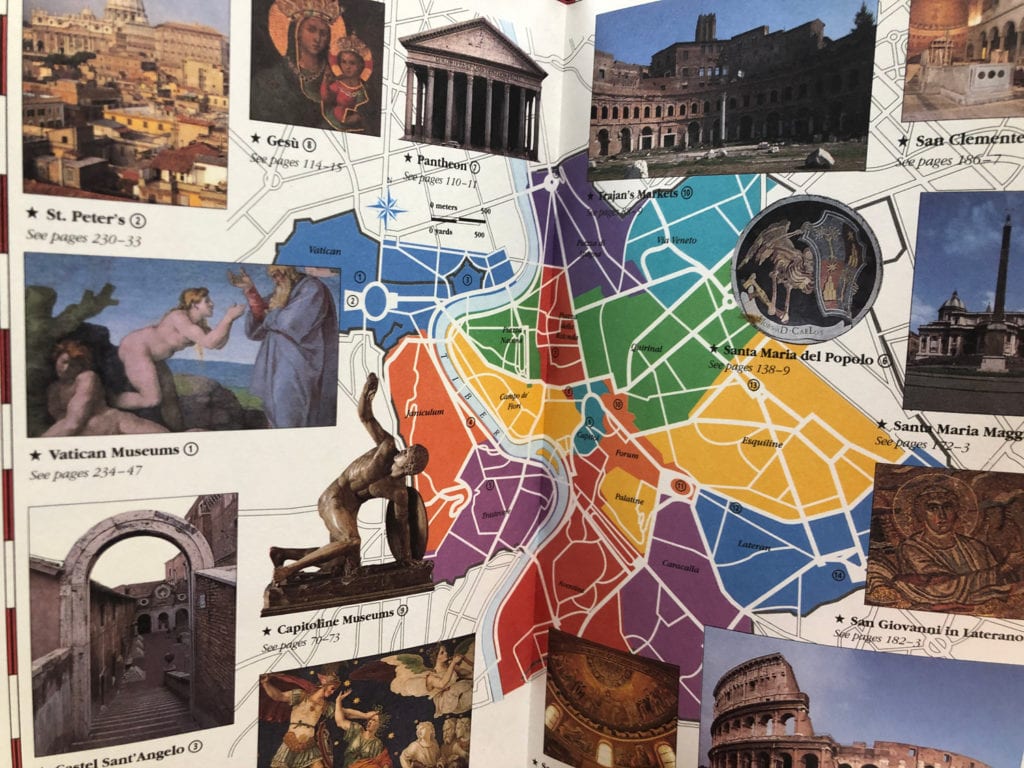
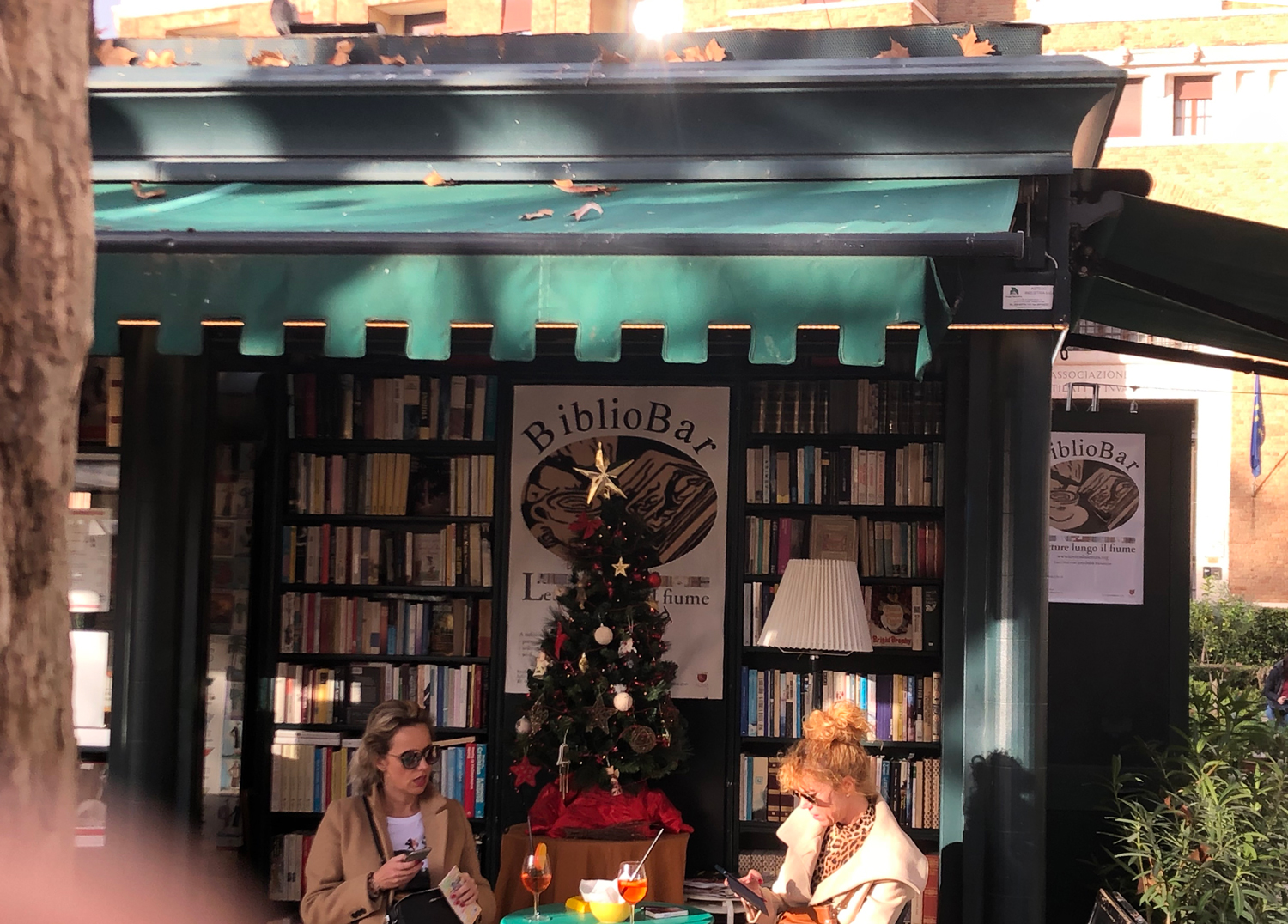
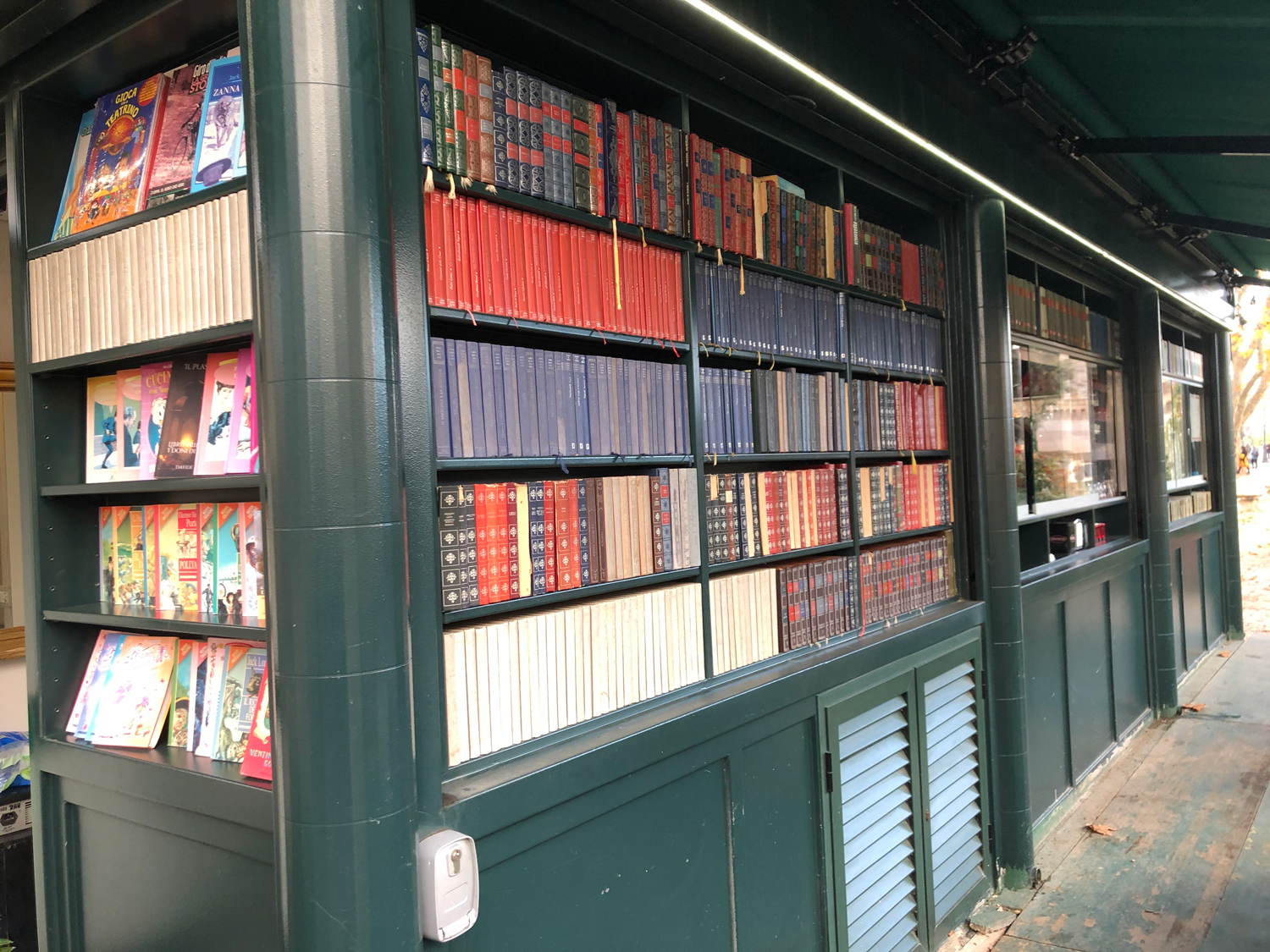
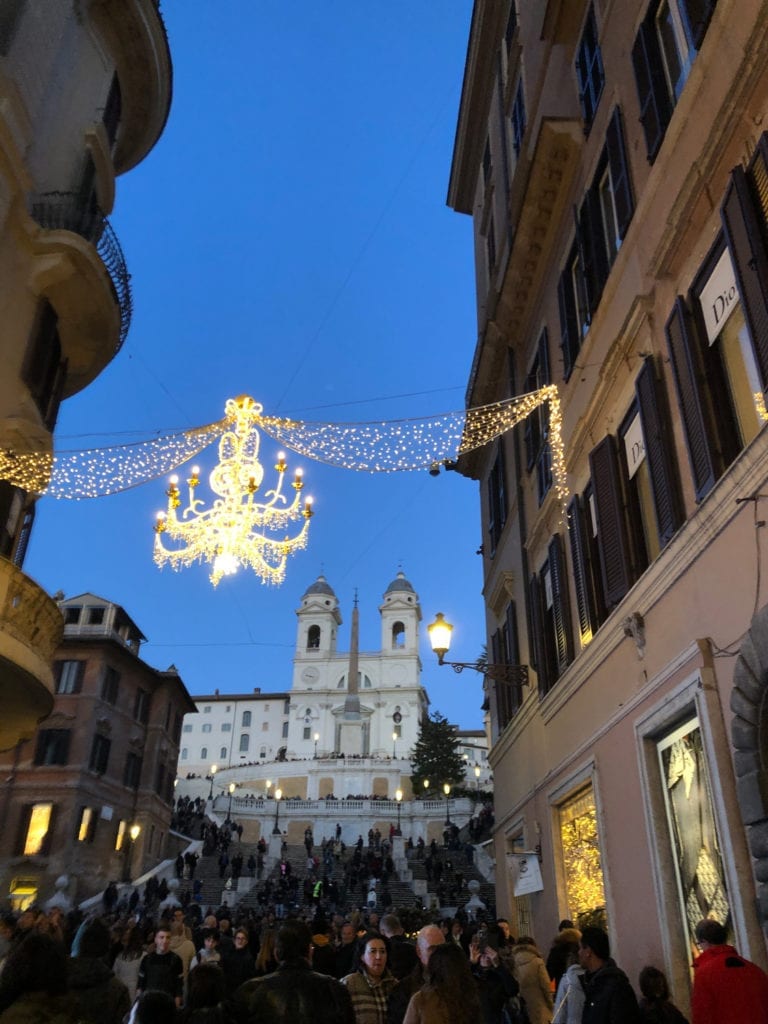
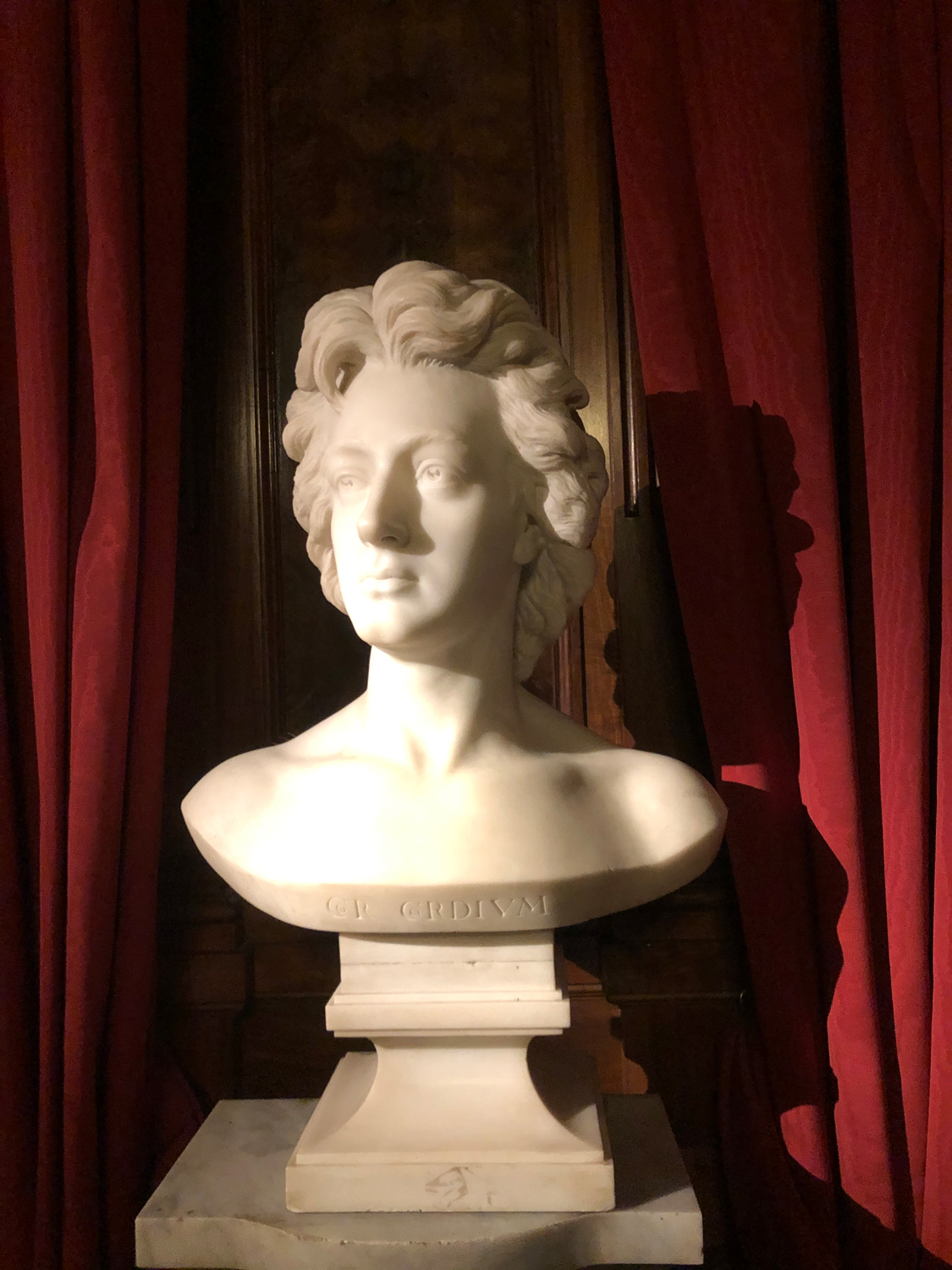
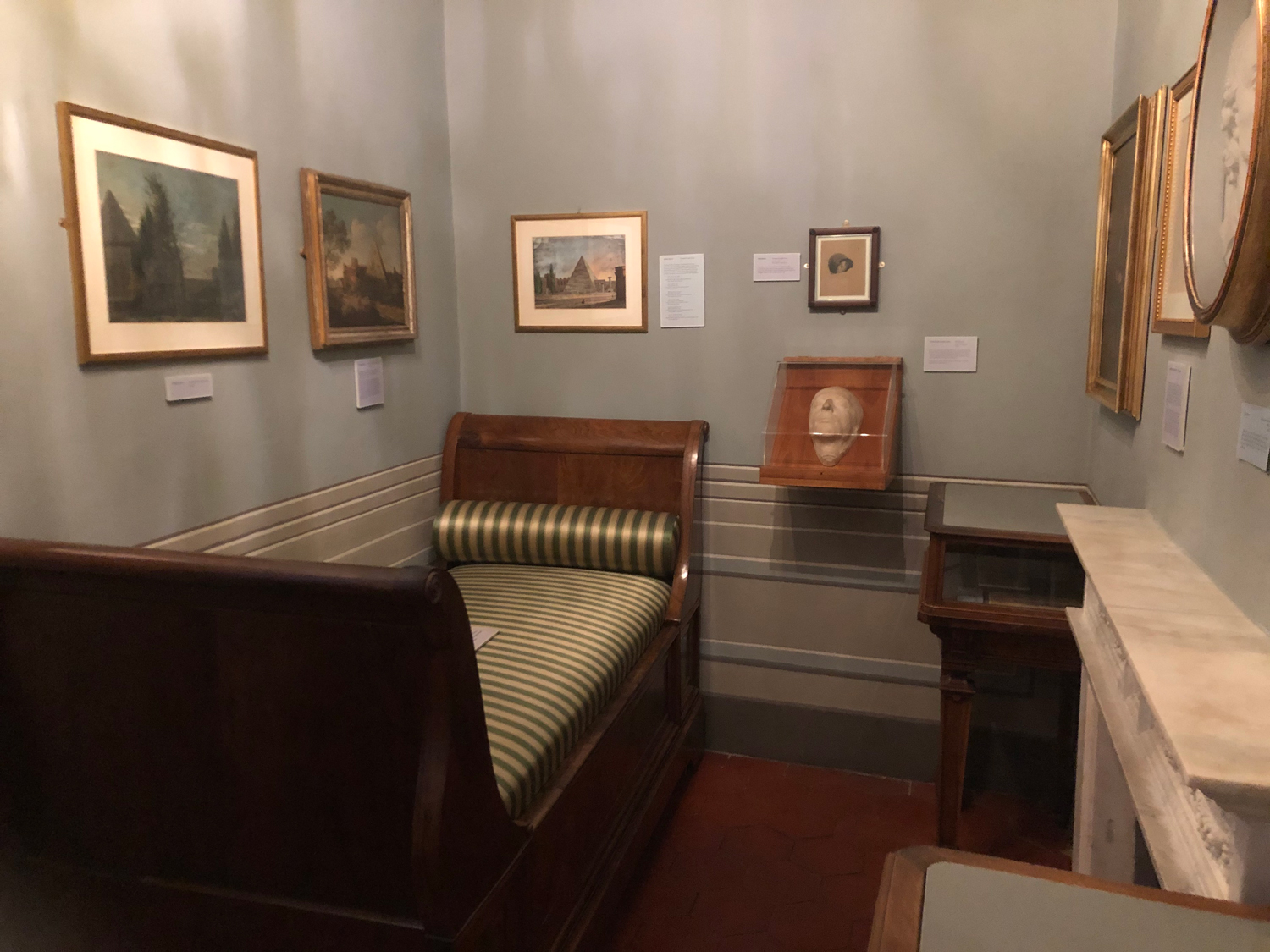
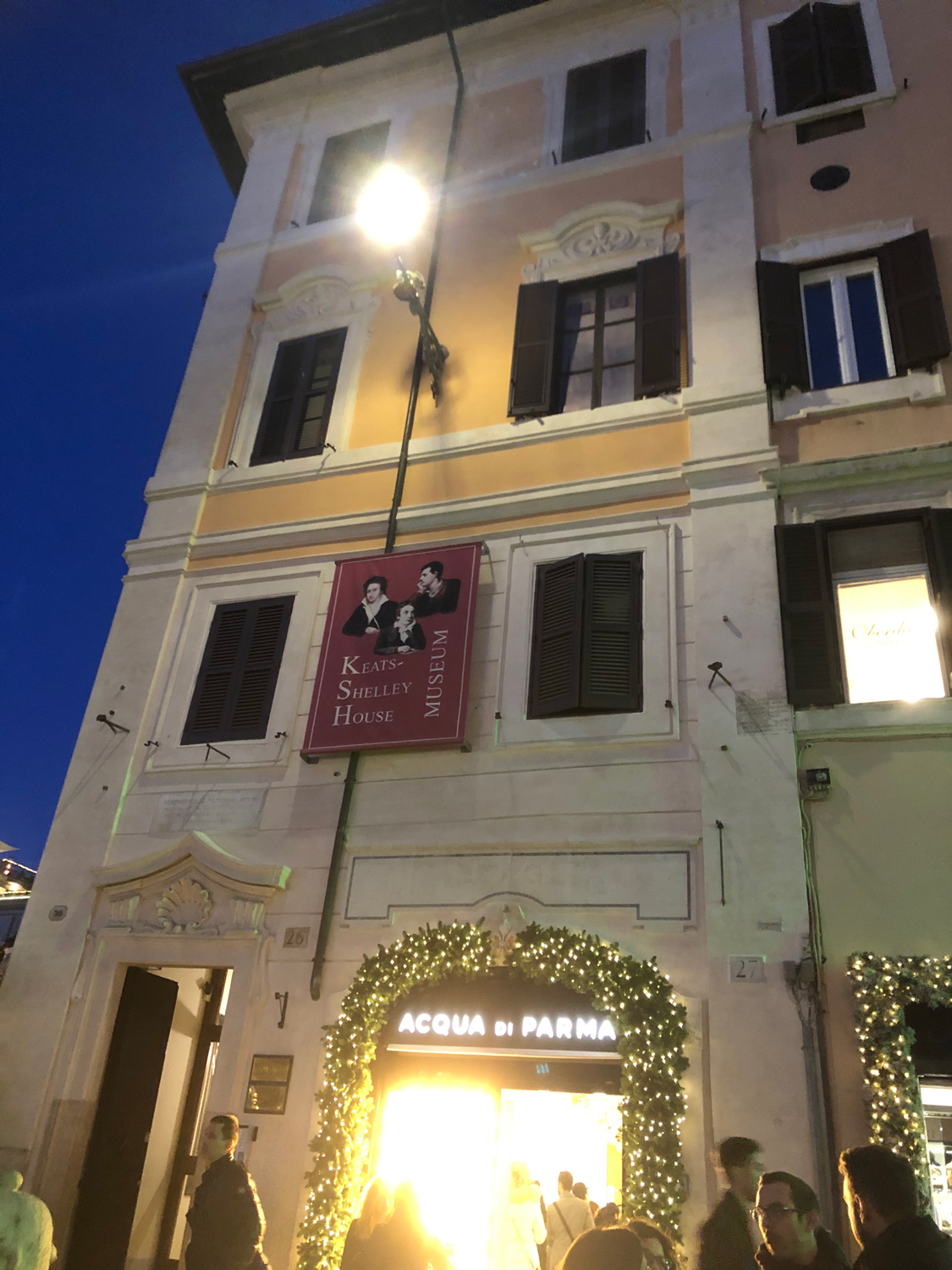
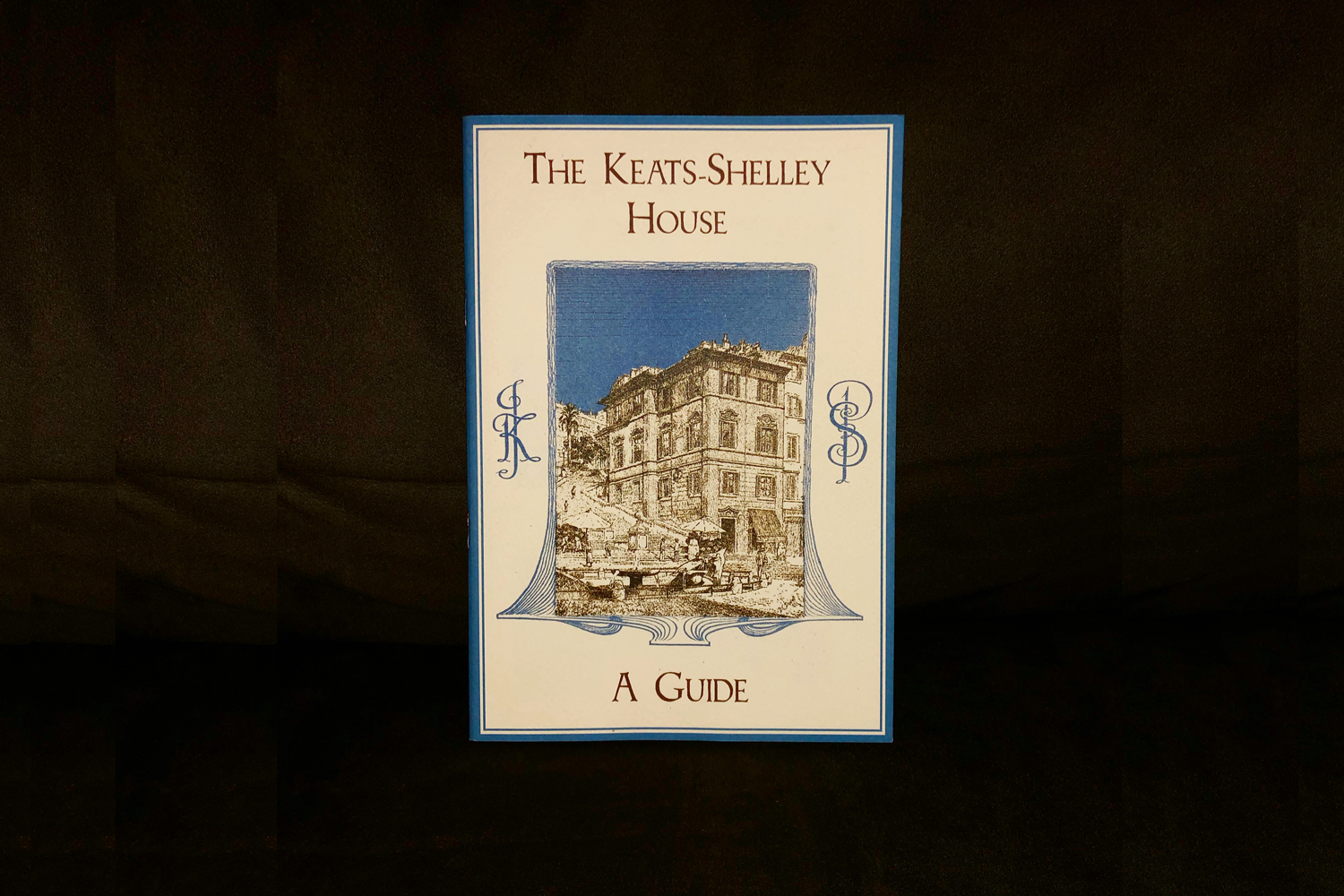
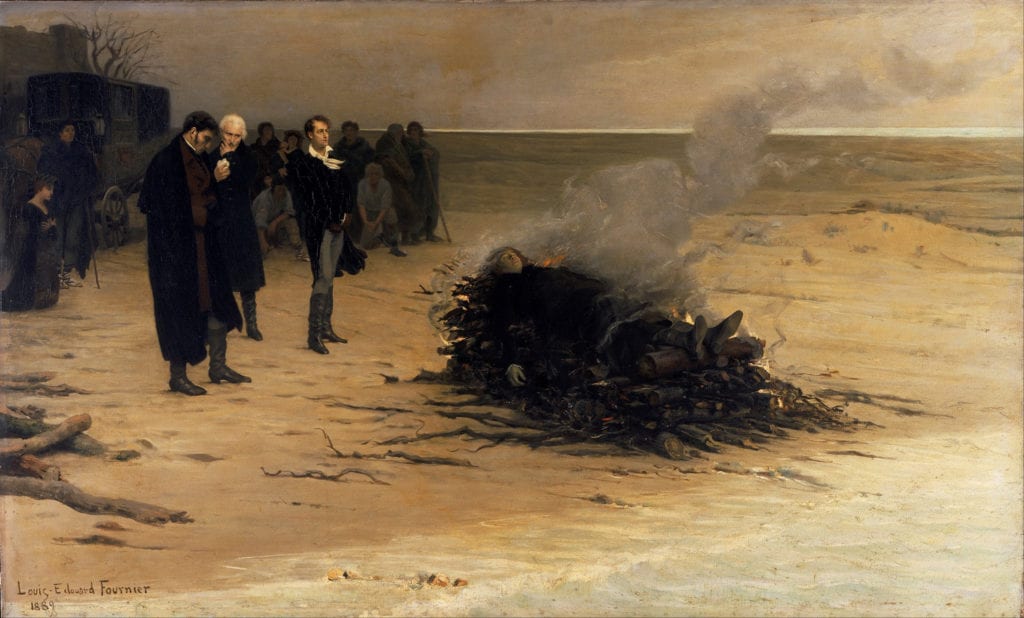
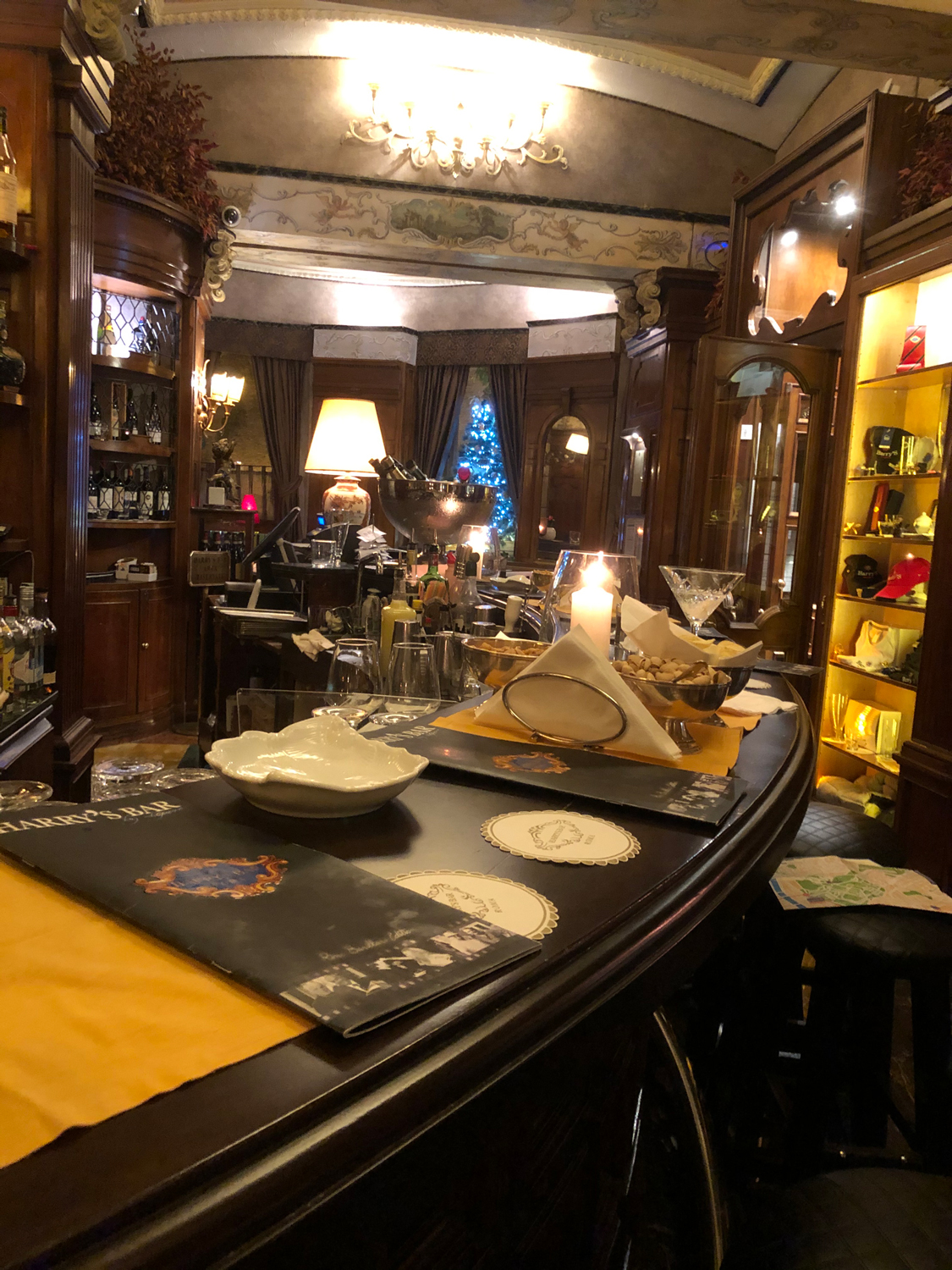
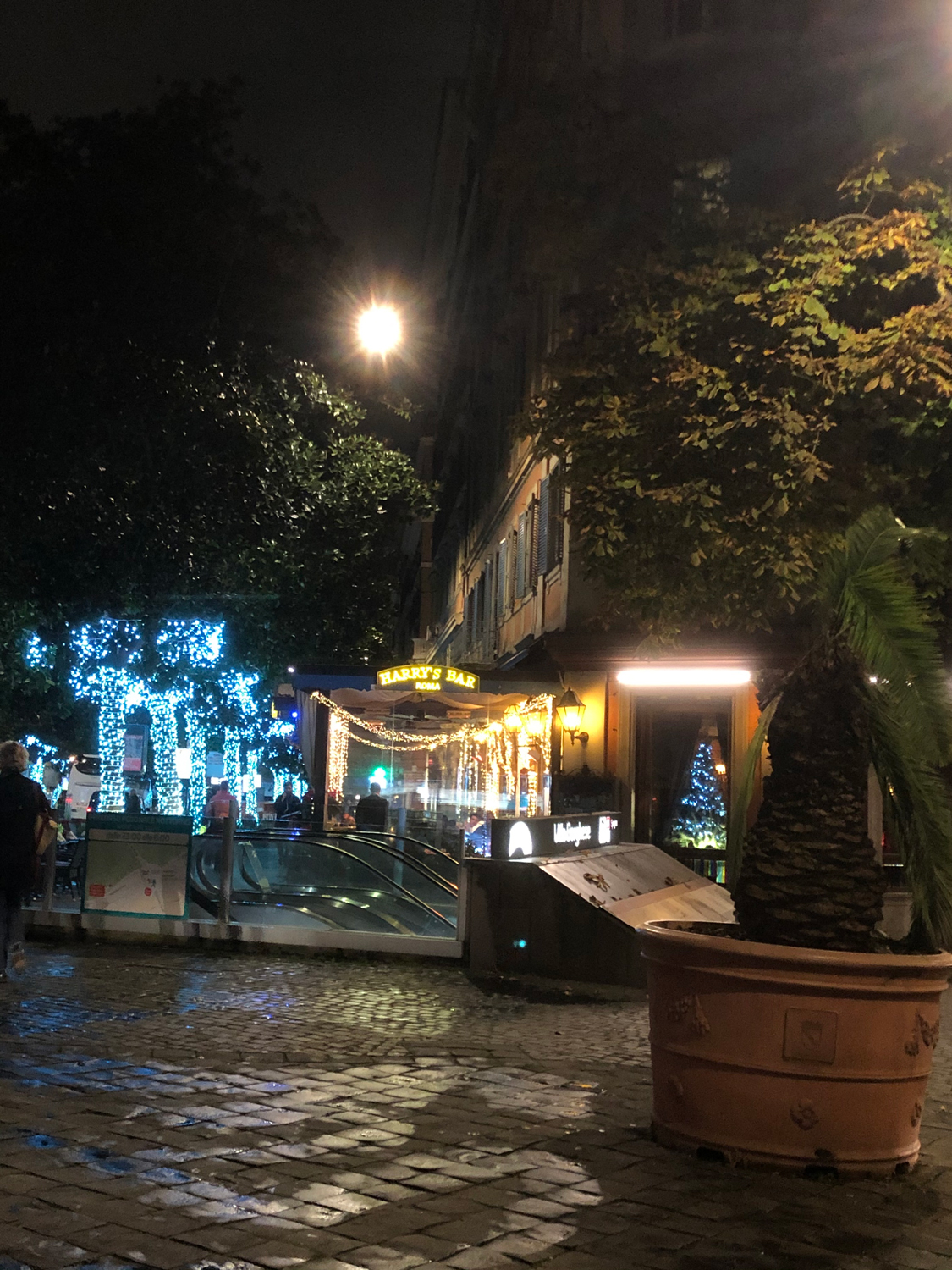
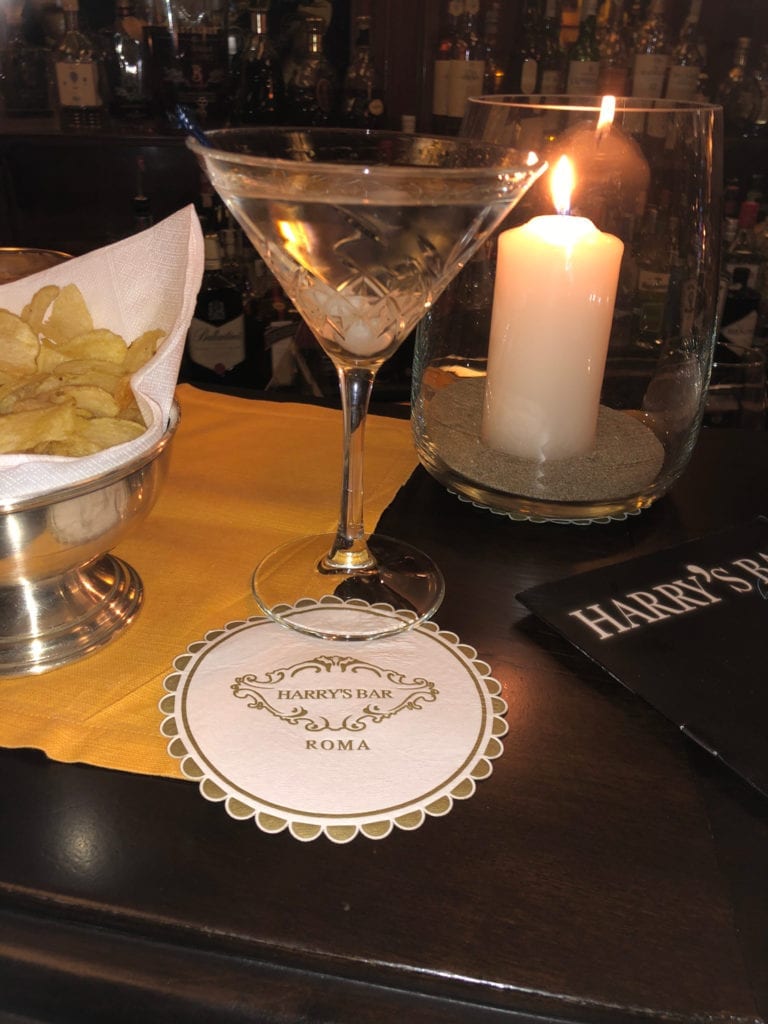
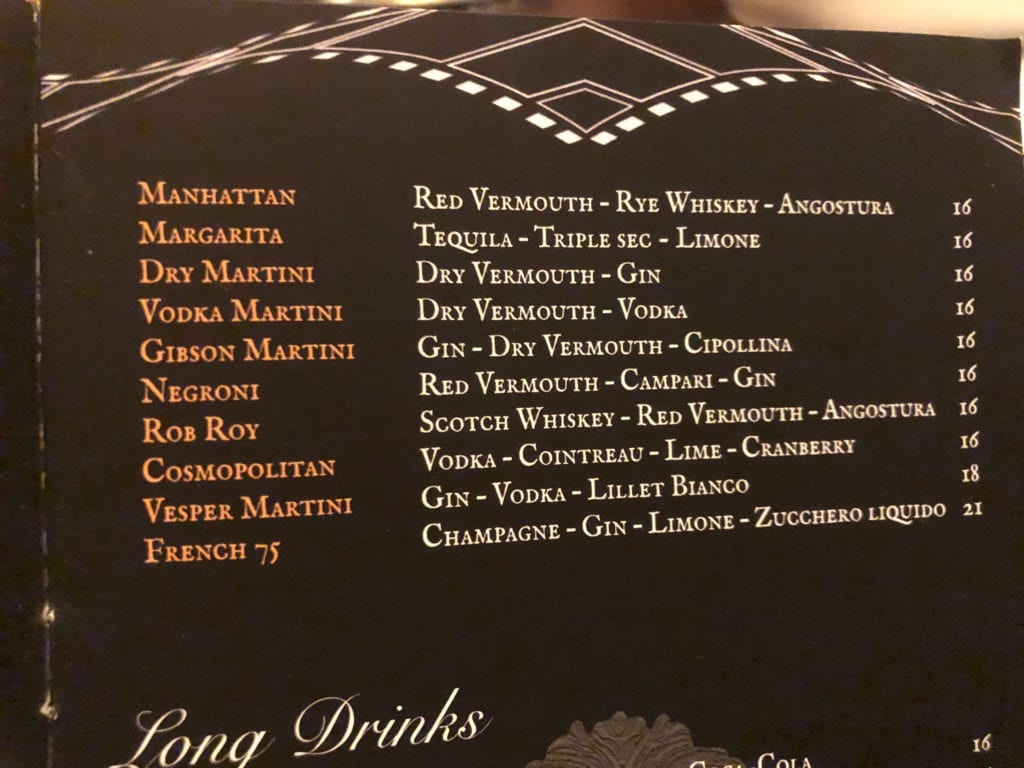
There are no comments to display.